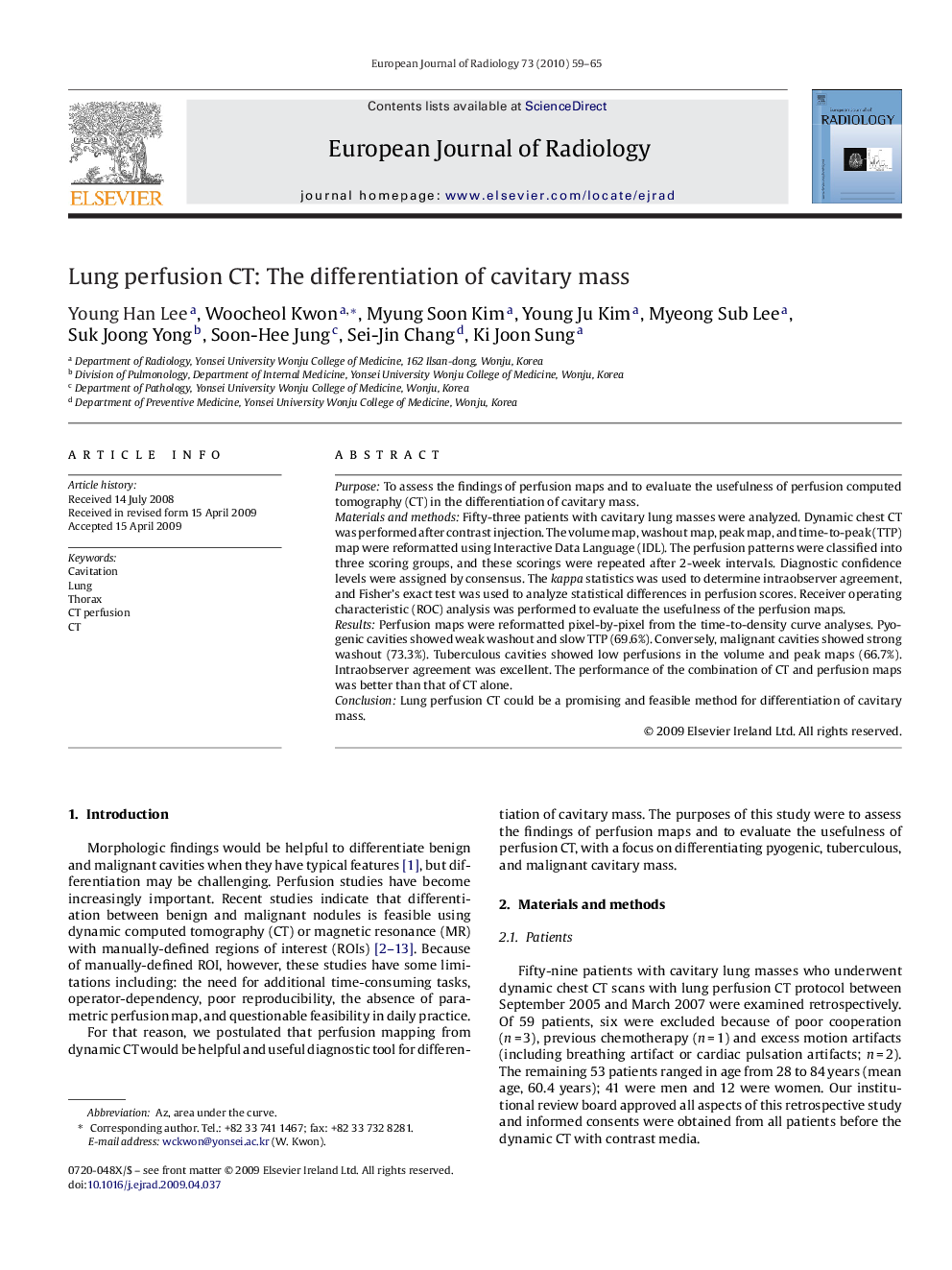| Article ID | Journal | Published Year | Pages | File Type |
|---|---|---|---|---|
| 4227393 | European Journal of Radiology | 2010 | 7 Pages |
PurposeTo assess the findings of perfusion maps and to evaluate the usefulness of perfusion computed tomography (CT) in the differentiation of cavitary mass.Materials and methodsFifty-three patients with cavitary lung masses were analyzed. Dynamic chest CT was performed after contrast injection. The volume map, washout map, peak map, and time-to-peak (TTP) map were reformatted using Interactive Data Language (IDL). The perfusion patterns were classified into three scoring groups, and these scorings were repeated after 2-week intervals. Diagnostic confidence levels were assigned by consensus. The kappa statistics was used to determine intraobserver agreement, and Fisher's exact test was used to analyze statistical differences in perfusion scores. Receiver operating characteristic (ROC) analysis was performed to evaluate the usefulness of the perfusion maps.ResultsPerfusion maps were reformatted pixel-by-pixel from the time-to-density curve analyses. Pyogenic cavities showed weak washout and slow TTP (69.6%). Conversely, malignant cavities showed strong washout (73.3%). Tuberculous cavities showed low perfusions in the volume and peak maps (66.7%). Intraobserver agreement was excellent. The performance of the combination of CT and perfusion maps was better than that of CT alone.ConclusionLung perfusion CT could be a promising and feasible method for differentiation of cavitary mass.
